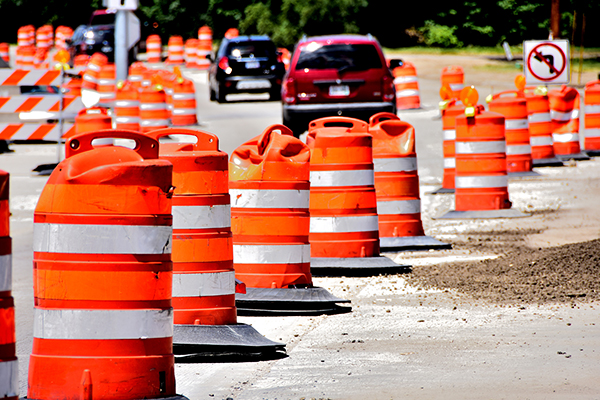Insights from connected vehicle data (CVD) allow road safety agencies to improve work zone safety.

By Matt Blackwell
In 2019, there were 115,000 crashes in work zones, resulting in 27,000 injuries. The same year, 762 work zone crashes killed 842 people. To combat these tragedies and prevent future accidents, Departments of Transportation (DOTs) and other road traffic agencies are turning to the power of connected vehicle data – near real-time collection of automotive data points – to better understand driver behavior and ultimately improve work zone safety.
Currently, DOTs and road safety agencies rely on many different types of devices to monitor work zone safety. These include roadside cameras, mobile phones, CCTV and other forms of embedded infrastructure. While there is value in each of these solutions, it’s challenging and expensive to clearly understand an entire state’s traffic performance using this siloed approach.
Augmenting more traditional data types with CVD allows a better understanding of the entire picture, creating an opportunity for DOTs and road safety agencies to improve work zone safety. For example, connected vehicle data can capture “significant driving events,” such as harsh braking and rapid accelerating that often align with work zone crashes. DOTs can aggregate CVD to understand how the average driver travels through a certain area and then determine ways to prevent these types of events in the future.
Embedded infrastructure – like CCTV and roadside cameras – provide DOTs and road safety agencies with useful, accurate information within milliseconds. But these types of devices are arduous and expensive to install and maintain. Mobile phone data also provides a great deal of useful information, but additional applications are required to collect, manage and store the data – a timely process that can take weeks to complete.
Augmenting these existing solutions with CVD provides a detailed and dynamic view of the roadways DOTs and road safety agencies monitor, allowing them to make informed decisions that will decrease the likelihood of work zone accidents and the resulting injuries and fatalities.
Compared to more traditional solutions, CVD provides more accurate and precise information about work zones and safety hazards. For example, CVD allows DOTs and road safety agencies to identify when and where safety sensors are activated. If the data shows that the sensors are continuously activated on a specific section of a roadway, they can make changes to that area, including the addition of more appropriate signage and the adjustment of lane closures.
Other sensors that help identify where potential accidents may occur include ABS triggering, traction control or Encapsulating Security Payload (ESP). This type of data shows when a driver is most likely to engage in risky behavior.
CVD provides real-time insights into how drivers respond to different conditions, including when they are more likely to brake, accelerate or switch lanes within a work zone. Additionally, CVD provides insight into what happens once a driver exits a work zone. In some cases, a detour or diversion might cause more congestion and safety issues than the original work zone. Based on this information, DOTs and road agencies can quickly adjust, ultimately improving the conditions of not only the work zone itself, but also the affected areas outside of it.
CVD dramatically enhances our ability to understand driver behavior and implement custom solutions that improve driver, passenger and worker safety. And thanks to the emergence of transportation and cloud computing technologies, CVD is more accessible than ever. DOTs, traffic safety agencies and road alteration planners can leverage this wealth of knowledge to keep people safe while also expanding critical infrastructure.

Matthew Blackwell is Assistant Vice President of Solutions Engineering at Wejo, a global leader in connected vehicle data, revolutionizing the way we live, work and travel by transforming and interpreting historic and real-time vehicle data.
Scott Ellyson, CEO of East West Manufacturing, brings decades of global manufacturing and supply chain leadership to the conversation. In this episode, he shares practical insights on scaling operations, navigating complexity, and building resilient manufacturing networks in an increasingly connected world.